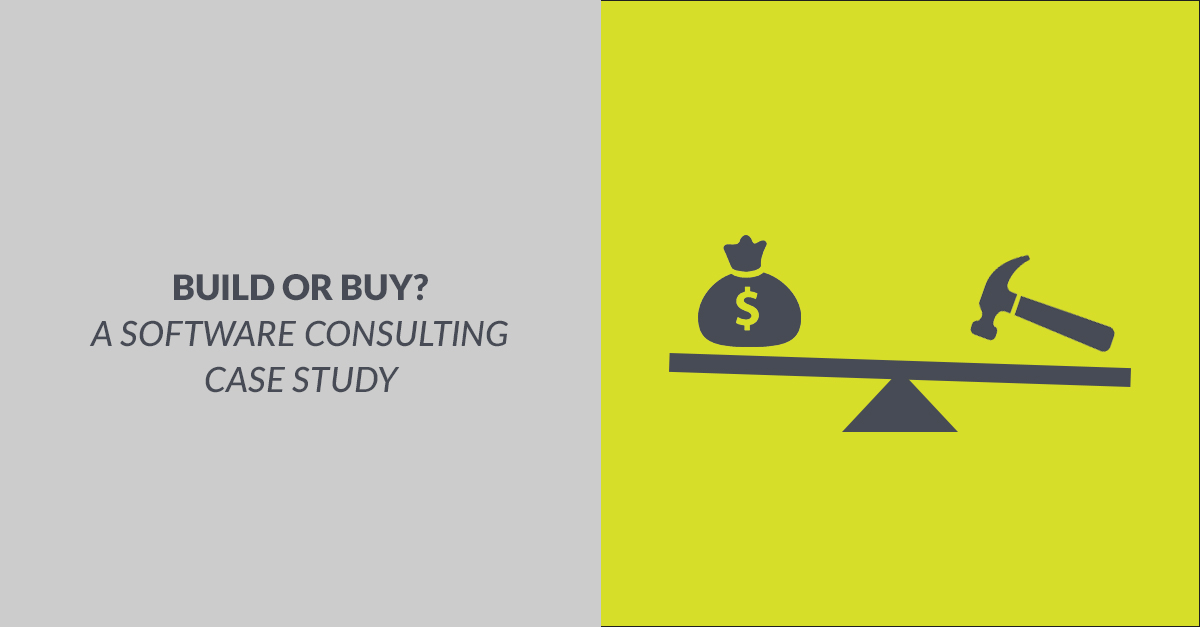
You might be surprised to learn that we don’t recommend custom software for all—or even most—business problems and opportunities. Custom software is the appropriate solution in surprisingly few situations. When it’s the right solution, the impact can be huge. When it’s not the right solution, it’s best to know that ahead of time.
Over the past year, we’ve worked to help clients understand when custom software is, and isn’t, the right fit. Often times, this conversation happens around a build vs. buy analysis—looking into the costs of building custom software vs. the costs of not doing so (doing nothing, buying an off-the-shelf software solution, or taking a completely different route).
One of our most successful build vs. buy analyses this year was with BraceAbility, an e-commerce brace and support retailer. By “successful,” we mean they got information that helped reduce their risk and gave them confidence in their decisions. We don’t mean they built custom software because, spoiler alert, that wasn’t the optimal solution for BraceAbility at this time.
When BraceAbility approached us, they wanted to know what it would cost to build a custom system that could start with inventory management and eventually be extended to other aspects of the business. They had a grand vision of what the impact of this type of system might be, but didn’t know how to get there or where to start. They were convinced they needed a custom solution, but weren’t sure the ROI was there.
The BraceAbility team put in the time to do due diligence before even contacting us—they understood (at a high level) the priority of the problems and opportunities they wanted to tackle, they knew what dollar amount they were willing to invest in the system, and they had a complete grasp on their processes from start to finish. They knew where human error, duplicate data entry, and other factors were leading to losses in efficiency.
“We approach software the same way we approach investing into a new piece of equipment,” said Therese Stevens, COO at BraceAbility.
With this solid foundation in place, we were able to dive into our analysis phase, during which the team (comprised of Far Reach and BraceAbility team members) stepped back and looked at the big picture. BraceAbility brought expertise about their business, and we brought expertise about software. The team members got on the same page about the goals of the project and set a vision for what success would look like.
In the analysis phase, the team outlined what a custom software solution might look like—what features were required and which were nice to have, the priority for implementation, and other factors to consider. Deliverables from this phase included:
- Concept model
- Application architecture
- Data structure
- Product roadmap
- Pros and cons for five different team structures
- Estimates for building a custom system
In the end, we discovered a custom solution would cost nearly 3X the value BraceAbility was going to realize from the system. Because of this, our recommendation was to look at an off-the-shelf solution, hire a single on-site developer to build a solution, or a combination of the two.
Custom software wasn’t the optimal solution in this case, but we definitely consider this project a success. BraceAbility got the information they needed to move forward with confidence and we helped them reduce their risk. The decided to hire an on-site developer to implement a modular off-the-shelf software. The custom system is still on the radar for the future, but for now, we’re all confident that the right decision was made based on BraceAbility’s current business state.
“After the analysis phase, we were confident in the path we were taking,” said Stevens. “We had no buyer’s remorse because we invested money to reduce risk, save money, and better understand our future investment.”
Are you curious whether custom software is the right solution for your problem or opportunity?
Let us help you decide.